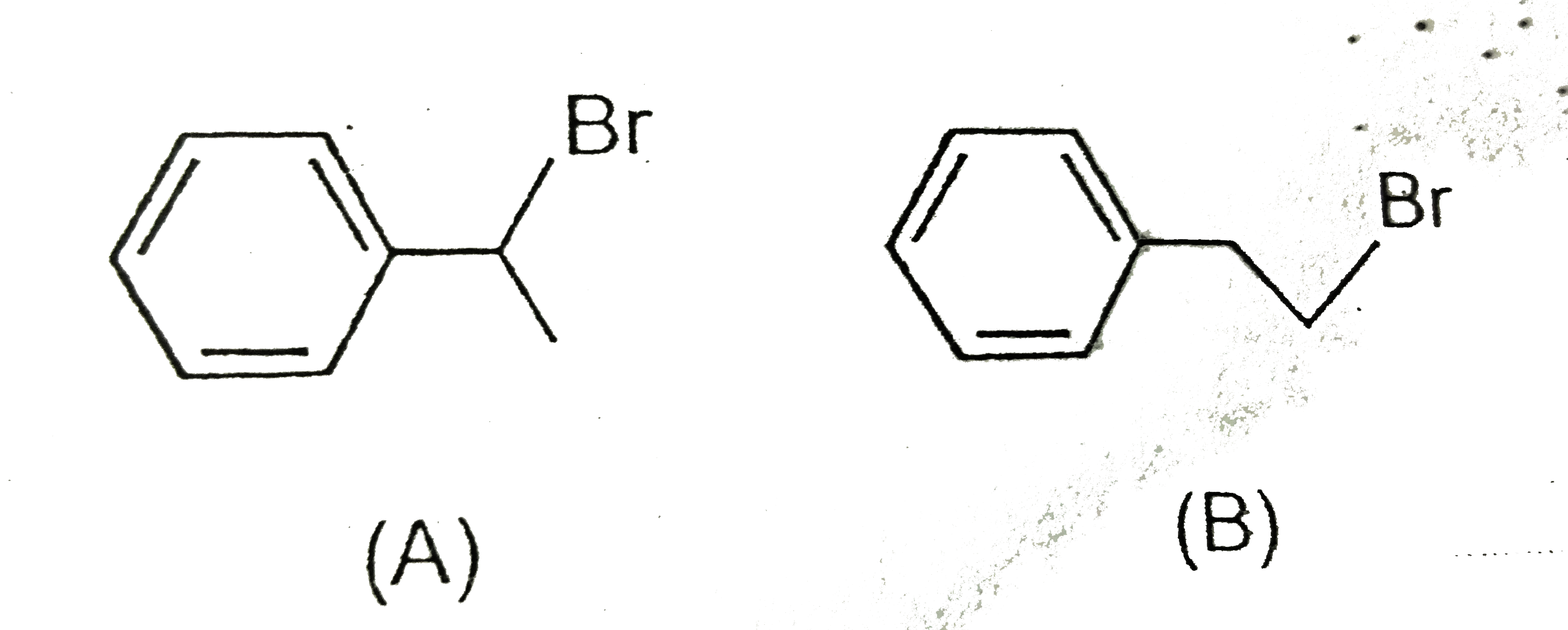Explain dehydrohalogenation reaction.
Elimination reaction (or dehydrohalogenation reaction ) :
This is a reaction in which two atoms or groups are removed from the
aduacent carbon atoms (α−β positions ) in the (organic ) molecule forming
unsaturated compound.
Explanation : When an alkyl halide is heated with alcoholic
solution of KOH an alkene is formed due to removal of H and halogen
X atoms from the adjacent carbon atoms (α−β positions ) and this
elimination reaction is called dehydrohalogenation reaction.
−H∣βC∣−H∣αC∣−KOH(alc.)△−−→−C∣=C∣−+KX+H2O
For example,
βCH3−αCH2−Br+KOH△−−→H2C=CH2+KBr+H2Oethyl bromide(alc.)isobutylene
Thertiary butyl bromide when heated with alcoholic solution of
potassium hydroxide forms isobutylene.
CH3−CH3α∣βC∣Br−CH3+KOH(alc.)△−−→CH3−isobutyleseCH3∣C=CH2+KBr+H2O
If by elimination reaction, two isomers are formed than more
stable symmetrical alkene which has the greater number of alkyl
groups attached to the doubly bonded carbon atoms is formed to a
greater extent giving major product.
For example :
CH3−CH2−CHBr2-Bromobutane−CH3+KOHalc.△−−→
Ch3−CH=CH−CH3+CH3−CH2−CH=CH2+KBr+H2Obut-2-ene(80%)but-1-ene(20%)(major product)(minor product)
Similar Questions
Knowledge Check
In dehydrohalogenation reaction, the conversion that takes place is ___________.
Aalkene to haloalkaneBhaloalkane to alkeneCalcohol to alkeneDalkene to alcoholWhich of the following organohalogen compound when heated with alcoholic KOH does not undergo dehydrohalogenation reaction :
ASecondary butyl chlorideBIsopropyl chlorideCNeopentyl chlorideDIsobutyl chlorideWhich of the following organohalogen compound when heated with alcoholic KOH does not undergo dehydrohalogenation reaction :
AIsobutyl chlorideBNeopentyl chlorideCSec-Butyl chlorideDtert-Butyl chloride
Write the product (s) formed when 2-Bromopropane undergoes dehydrohalogenation reaction.
View SolutionBoth the reactants can be used to prepare styrene through dehydrohalogenation reaction . Which alkyl halide is better substrate to prepare styrene ?

View SolutionBoth the reactants can be used to prepare styrene through dehydrohalogenation reaction . Which alkyl halide is better substrate to prepare styrene ?

View SolutionWrite the product(s) formed when
(i) 2-Bromopropane undergoes dehydrohalogenation reaction.
(ii) Chlorobenzene undergoes nitration reaction.
(iii) Methylbromide is treated with KCN.
View SolutionWrite the product(s) formed when
(i) 2-Bromopropane undergoes dehydrohalogenation reaction.
(ii) Chlorobenzene undergoes nitration reaction.
(iii) Methylbromide is treated with KCN.
View Solution
